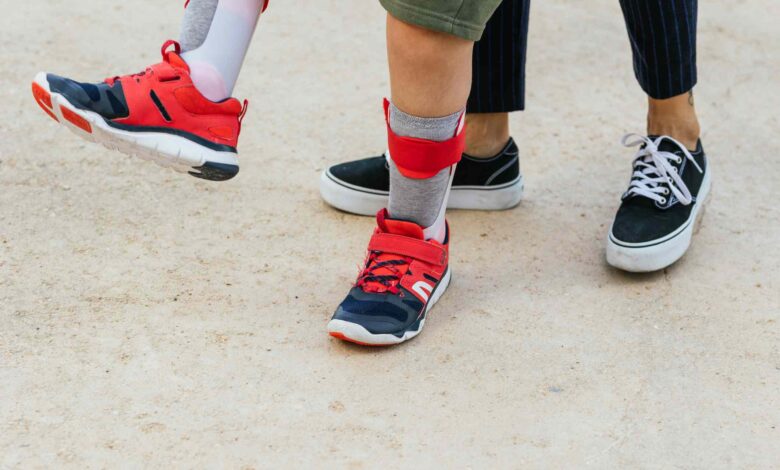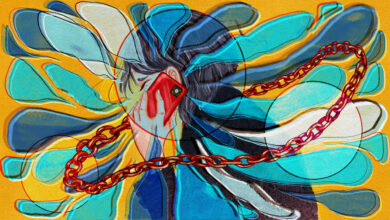Duck-Footed (Out-Toeing): Symptoms, Causes, Treatment

:max_bytes(150000):strip_icc():format(jpeg)/Health-GettyImages-1475116219-4609c7f7e846429aa65853fc0c85a011.jpg)
When you’re duck-footed (also called out-toeing), the bones in your leg twist outward, causing your toes to point outward naturally when you stand or walk.
Out-toeing is most common in infants and children, and it affects about 1 in 4 children with the neurological disorder cerebral palsy.
While out-toeing often goes away as a child grows, some develop it later in life or require treatment.
To be duck-footed is to have feet that point apart naturally. In children, this can cause a waddle, and in adults, a shuffle. Out-toeing doesn’t usually affect your ability to walk, run, or move and causes no pain or discomfort. However, the extent of symptoms can depend on the root cause of the duck-footedness.
External Tibial Torsion
With this type of duck-footedness, the tibia (shin bone) twists outward relative to the femur (thigh bone), causing the feet to form a V in their natural position. External tibial torsion most commonly arises in children ages 4-7.
Femoral Retroversion
This type, most commonly seen in newborns, occurs when the femur rolls outward. In infants, the feet form a 90-degree or right angle. Femoral retroversion typically resolves within the first year of walking, though older children can be affected.
Pes Planus
Ples planus, being flat-footed, occurs when there’s no arch on the bottom of your foot. The foot’s entire sole touches the ground, sometimes leading to out-toeing. Nearly all people are born with flat feet, and it usually resolves as you age.
Ples planus affects about 45% of preschool-aged children and 15% of those 10 and older. Flat feet often cause no symptoms but can cause pain in the sole.
Out-toeing occurs when the hip joint, femur, or tibia tilts outward. They display external rotation, an angle away from the center. A range of health factors can cause this.
The fetus’s position in the womb can affect its pelvis, leading to out-toeing in newborns. A common cause of duck-footedness in children is having flat feet. Less often, out-toeing is a sign of a neurological disease like cerebral palsy.
Pre-adolescents and teenagers can develop capital femoral epiphysis, a growth disorder that allows the femur to slide out of position.
Adults may develop a duck-footed walk due to hip, ankle, or foot injury, tense or imbalanced hip muscles, and posture problems. Sitting too much in certain positions can also affect the hips, causing rotation.
Risk Factors
Several health factors raise your risk of developing a duck-footed gait (walk). These include:
- A family history of out-toeing
- A history of hip injury
- Arthritis
- Cerebral palsy, multiple sclerosis, or other brain and nervous system conditions
- A sedentary lifestyle
If you present with a duck-footed gait, your healthcare provider will work to identify the cause. They’ll ask about any family history of duck-footedness, previous injuries, your typical sitting habits and postures, and other factors.
In addition to taking medical history, your healthcare provider may perform the following exams:
- Physical exam: The provider will assess your hips, legs, and feet for signs of tightness or injury and measure your legs’ range of motion.
- Angular measurement: As you lie on your stomach with your knees bent, healthcare providers measure the angle of your feet relative to your legs.
- Gait analysis: The provider will observe you or use cameras to assess how well you walk, looking for waddling or other signs.
- Run analysis: The provider may observe you while you run on a treadmill; they will look for waddling or extra motions in the feet.
- Imaging: On rare occasions, if the health provider suspects an underlying condition, they will order an X-ray or magnetic resonance imaging (MRI).
Depending on the case, treating duck-footed gait may not be necessary. It may resolve on its own in children and not cause significant problems in adults.
Treatments focus on changing the position of the bones and retraining the body to adjust how you move.
Watchful Waiting
Duck-footed gait in infants and young children often resolves on its own. If it persists at 3-6 years old, your child’s healthcare provider may recommend watchful waiting: seeing if the condition goes away. They’ll educate you about the condition and monitor your child’s progress in periodic appointments.
Physical Therapy
Physical therapy helps prevent potential physical effects of duck-footed gait and addresses potential causes.
Working with a physical therapist, you learn exercises to adjust leg position and ease pressure on your joints or feet. You may also work on exercises and stretches that strengthen and correct posture problems.
Orthotics
Alongside physical therapy, you may see a podiatrist, a medical doctor specializing in foot and ankle conditions. A podiatrist can fit you with orthotics, wearable devices meant to improve posture and manage foot angle. For instance, they may recommend “wedge” shoe inserts or specialized footwear.
Surgery
Surgery is a last resort option for duck-footed gait, reserved for children 10 or older or severe cases that risk complications. This surgery, known as osteotomy, involves changing the position and shape of the femur, using surgical screws to provide support and help reposition the bones.
While being duck-footed doesn’t usually cause symptoms, it can cause problems over the long term. Potential complications of out-toeing can include:
- Muscle dystrophy: Duck-footed walking can affect certain muscles around the shin and in the calf or glutes (buttocks muscles), leading to muscle weakness.
- Knee injury: Out-toeing increases the risk of falls and can stress the knee joint, increasing the chance of injury.
- Ankle injuries: Ankle injuries or chronic pain can arise from falls or because the ankle joint must accommodate an abnormal leg position.
- Foot pain: Walking duck-footed can put pressure on different parts of the foot, increasing the risk of chronic foot pain.
- Gait abnormalities: Being duck-footed can cause permanent changes to your walk, sometimes limiting your range of motion.
Children who are duck-footed often outgrow the condition by age 8. Out-toeing doesn’t typically affect your ability to walk, play sports, and go to school or work. Complications and symptoms are rare with a duck-footed gait.
However, if you’re concerned about how you or your child walk, seek medical care. Surgery is rarely necessary, and conservative treatments like physical therapy are highly effective. Most people who are duck-footed live full, happy lives with the condition.




